The results are in! Thanks so much to everyone who cast their votes in both Part 1 and Part 2 of this experiment.
The Experiment
To recap, I was testing the theory that images from a Leica CCD-based camera have a unique and instantly identifiable look and feel to the images. Many who hold this belief feel that this look cannot be achieved with a CMOS-based camera, regardless of post-processing efforts.
To conduct the test, I ventured out with both an M9 and an M240 while I was visiting San Francisco with my family for a couple of days at the end of February. After taking an image with one camera, I’d quickly swap lenses to shoot roughly the same picture with the other body using the same lens and equivalent settings.
Part 1: Head-to-Head Comparisons
For Part 1, I first processed the M9 files to look like what I’d expect M9 images to look like using my preset and personal preference. I then used the M9 images as a reference to adjust the corresponding M240 files and tried to achieve a rough match. Rather than use all the tools at my disposal to create an exact match, I opted instead to impose some limits. In the spirit of the experiment, I wanted to see if a match could be achieved without using any localized adjustments. No masking. No selections. No adjustment or gradient brushes. Instead, I used only overall image slider adjustments in Adobe Lightroom. After all, this test was not about how good my post processing skills are when given any and all tools and unlimited time. I wanted it to be realistic so that almost anyone with moderate Lightroom skills could produce the same results as I did. The pairs were then posted without metadata and were randomized in the order displayed.
Part 1: The Results
The results were certainly interesting. On the direct comparisons in Part 1, only 7 out of 19 (36%) match-ups were correctly identified. This is pretty telling. I received feedback from some users that they started taking the test and just gave up halfway through as they couldn’t see any significant differences and felt they were merely guessing. This is visible in the voting numbers, with almost 800 votes for the first set and about 450 for the last set (as of this writing).
There were some surprises for me, though. I was amazed that so many were able to accurately identify the M9 images in the Streetcar and Apartment sets. Roughly two thirds of the voters picked correctly on these. On the flip side, I was equally stunned that so many guessed incorrectly on two images which I felt were bound to be easier to pick due to their color ranges: Red Cards and Lombard Street. Most other pairs of images came in very close to 50/50. Keep in mind that this test wasn’t to determine which camera was more capable. It was to merely test the “CCD look” theory. The conditions purposely favored the M9, as the comparisons featured images taken in good quality, directional natural light with vibrant colors, and defined contrast. These kinds of punchy images at low ISO almost always look great from the M9.
Here are the raw voting results as of March 6, 2015:
Part 2: Single Images
For Part 2, I wanted to take a slightly different approach. I was on vacation and as such, didn’t shoot soley for the sake of making image comparison sets. At a certain point, this kind of shooting gets fairly tedious. Once I knew I had enough material for the test, I just focused on having fun taking pictures like I would normally do in a great shooting locale like San Francisco on a gorgeous day.
For these single images, I processed with respective presets for each camera and my personal taste, picked some of my favorites and posted individual photos. The challenge this time was to correctly identify which camera was used to produce each image. And because, for me, the head-to-head test was over, I allowed myself to seek out a broader range of subjects and more candid scenarios that didn’t only suit the M9. Shots were taken at night, at high ISO, and indoors under artificial lighting. As indicated by the votes on the images, most people erred on the side of picking the M240 for these types of shots. And even with these obvious examples, only 55% of the images were correctly identified. I will say, though, that swings in preferences were much more pronounced than in the head-to-head comparisons of Part 1.
Part 2: The Results
I didn’t set out to make this a segment full of trick questions, but unfortunately, I only had two images from the M9 during my free shooting time that I felt were worthwhile to post. Why? Well, frankly, the M240 was more fun to shoot with, so that’s what I used for 90% of my shooting even though I carried both cameras with me. It’s faster. I can use the EVF for precise composition. The LCD screen allows more accurate review. And, ironically, the CMOS sensor fares far better in poor and mixed light and is vastly superior for high ISO shooting. So, if you voted/guessed that every image was taken with the M240 you’d have scored way, way above the average.
Here are the raw voting results, again from March 6, 2015:
| Votes | M9 | M240 | Margin | Correct? | Which Camera? | |
| Cigar Store Café | 314 | 41.4% | 58.6% | 17.2% | Y | M240 |
| Washington Square Park | 300 | 62.3% | 37.7% | -24.6% | N | M240 |
| Julie on Cable Car | 303 | 30.7% | 69.3% | 38.6% | Y | M240 |
| Yellow Tulips | 280 | 45.0% | 55.0% | 10.0% | N | M240 |
| Two Guys at the Pier | 281 | 62.6% | 37.4% | 25.2% | Y | M9 |
| Red and White Fleet Sign | 272 | 45.6% | 54.4% | -8.8% | N | M9 |
| Red Light Gauges | 258 | 33.7% | 66.3% | 32.6% | Y | M240 |
| Old Dial pn Sub | 261 | 41.8% | 58.2% | 16.4% | Y | M240 |
| Sub Engine Gauges | 256 | 55.9% | 44.1% | -11.8% | N | M240 |
| Battle Telephone | 243 | 46.5% | 53.5% | 7.0% | Y | M240 |
| SS-383 Conning Tower | 251 | 58.2% | 41.8% | -16.4% | N | M240 |
| Leaving Museum | 243 | 62.6% | 37.4% | -25.2% | N | M240 |
| Pier at Sunset | 253 | 35.6% | 64.4% | 28.8% | Y | M240 |
| Ghiradelli Square at Night | 246 | 48.4% | 51.6% | 3.2% | Y | M240 |
| Sunset on the Beach | 239 | 56.9% | 43.1% | -13.8% | N | M240 |
| Sophia with Hat | 245 | 37.6% | 62.4% | 24.8% | Y | M240 |
| Angled Street | 228 | 45.2% | 54.8% | 9.6% | Y | M240 |
| City View out of Round Window | 221 | 62.4% | 37.6% | -24.8% | N | M240 |
| Coit Tower Windows | 224 | 57.6% | 42.4% | -15.2% | N | M240 |
| Coit Tower Looking Up | 223 | 40.8% | 59.2% | 18.4% | Y | M240 |
| Red Car | 227 | 51.1% | 48.9% | -2.2% | N | M240 |
| Modern House on Lombard | 222 | 60.8% | 39.2% | -21.6% | N | M240 |
| Loading Bay | 218 | 44.0% | 56.0% | 12.0% | Y | M240 |
| Parking | 217 | 42.4% | 57.6% | 15.2% | Y | M240 |
| Hallway | 199 | 43.7% | 56.3% | 12.6% | Y | M240 |
| Fishmonger | 206 | 50.5% | 49.5% | -1.0% | N | M240 |
| Drydock | 203 | 40.9% | 59.1% | 18.2% | Y | M240 |
| The Embarcadero | 200 | 55.5% | 44.5% | -11.0% | N | M240 |
| Roll Your Own | 207 | 59.9% | 40.1% | -19.8% | N | M240 |
| Red Door | 205 | 47.3% | 52.7% | 5.4% | Y | M240 |
| Shadow Tree | 217 | 56.7% | 43.3% | -13.4% | N | M240 |
Admittedly, many of the M240 images do indeed look like they were taken with the M9. This wasn’t because I was trying to play games or fool anyone. The files ended up this way because I liked the way they looked. Remember, on these images I didn’t have a known aim point. Processing, for me, as I imagine for many other photographers, is highly personal and subjective. Very, very few areas of photography benefit from “accurate” color or tone. Almost all disciplines of our fair art form take liberties to represent our own unique visions. Even before digital, we used filters to alter color or contrast, shot various film types with no two emulsions offering the same visual fingerprint, employed different chemistry to achieve a specific look, and messed around in the darkroom for hours to create our desired finished vision. I make no apologies for editing my images to suit my tastes. And, furthermore, I think that the pursuit of a mythical “accurate” or “neutral” result out of camera with no processing doesn’t jive with the most basic tenets of photography, be it film or digital. This quixotic quest, while appearing reasonable and noble, doesn’t make better photographs. But I digress.
Looking at the results from Part 2, images like Washington Square Park, Roll Your Own, Modern House on Lombard and City View Out of Round Window fooled around two thirds of voters. Other images that are well-suited to the M240, like Julie on Cable Car, which was taken at ISO 1000 shooting into a heavily-backlit scene seemed a bit more obvious with almost 70% picking that one accurately. From my experience, an M9 would not have been so graceful here. Likewise, most people picked the M240 for the submarine interior shots, which were handheld at ISO 1600, except for Red Light Gauges, which was taken at ISO 2500. Shots where I left the files more open and airy, rather than pulling down the darker midtones like Coit Tower Looking Up, were also correctly identified as M240.
The reality is that I am quite fond of images that I’ve taken with both the M9 and the M240. I never really took to direct comparisons as I wasn’t displeased with the different look offered by the M240. In my particular workflow, I apply my own homegrown import presets based on camera model when I bring my DNG files into Lightroom. I have presets for S, M9, M240, M Monochrom, X Vario, T and D-Lux. If you don’t already use presets, I urge you to incorporate these into your own workflow. By applying baseline corrections and settings that you’d use anyway, you’ll save considerable time when processing a large number of files. And, perhaps more important to me, is that I am able to get a better idea of an image’s worth as the untouched files already have a look that I like and expect. This makes selection and editing a more streamlined process.
No such thing as out of camera
In spite of what you may have heard, there is no such thing as “out-of-camera.” It doesn’t exist. A sensor is a collection of monochrome pixels. The Bayer filter, or color filter array (CFA), over the sensor allows the camera to see color. But, only 1/3 of the color information is actually being captured. The rest is interpolated. This process of interpolation is called demosaicing, whereby a coherent full-color image is generated from the individually colored pixels. The software opening the RAW file performs the interpolation and renders colors based on input profiles and the type of algorithm used, along with any “secret sauce” the software might put in. For Leica M files, Lightroom has two different built-in profiles (Embedded and Adobe Standard), or you can make your own. You can also change the rendering process version (2012, 2010, 2003) and see different results.
So much is done to manipulate the file before you ever open it in Lightroom or ACR or Capture One or Aperture. Pretending that what the program shows you by default is somehow virginal or unmolested is the stuff of fantasy. Does it benefit the photographer when the default image shown in Lightroom is close to the look they want without much editing? Of course, and this is a testament to the program’s algorithms and camera profile. But, it isn’t everything. Users can make their own camera profiles and their own presets to change the default “out-of-camera” behavior.
Personally, I don’t take much stock in tests talking about or showing out-of-camera results with no post processing of any kind (although there is always much processing performed before this by the software), just as I never took to judging negatives off the processing line, without first making prints with my own set of corrections.
Lessons Learned
I learned quite a lot about both the M9 and M240 during this test. I was pleasantly surprised to rediscover the M9. The camera can indeed produce some really stunning images under the right conditions. To its credit and, in line with what CCD supporters say, the color palette produced by default in Lightroom (after my preset application) is extremely pleasing in most cases. Images have a bite and saturation that is very attractive. Deep blues, thick midtones and punchy highlights add to the M9’s inherent per-pixel sharpness. In daylight shooting with good, directional light and a scene with saturated colors, the M9 is truly hard to beat. Even though the camera is going on six years old, it still produces images that keep pace with the best. Its weakness, due to its CCD sensor, is low light performance. If your shooting needs don’t dictate the need for ISO 3200 and you've got some fast M glass to boot, well, by all means, the M9 can still work its magic for you.
The M240, for its part, puts out smoother, more nuanced files that hold more dynamic range, a gentler highlight roll-off and cleaner shadow information. Blowing highlights on the M240 can be done without ruining the entire image as there is a certain glow and transition, rather than a clipped, sharp edge look as in the M9. Shooting strongly backlit subjects or even directly into bright light sources is a fun and fruitful experience, not a painful one, especially when paired with highly flare-resistant lenses like the 35mm f/1.4 Summilux-M ASPH FLE.
Under less-than-ideal scenarios in artificial or low light, the M240 wins hands-down. It handles mixed light sources better, although its AWB seems to be slightly on the warm side under most scenarios. A WB Adjust feature on the camera could easily solve this tendency. Shadow noise is well-controlled at higher ISO settings, as is overall image tonality.
In post processing, the M240 files can withstand much more modification without breaking down. They have more highlight and shadow recoverability and more malleability overall. This test, at the very least, demonstrated the relative ease in which the M240 files could be made to mimic M9 images. This isn’t to say that you have to make M240 images into M9 ones, just that you can, if this is the look you prefer.
What exactly did I have to do to the M240 to make them look like M9 ones?
Much of the variance between the two files relates to the openness/lightness of the M240 images. Drop the overall exposure about a stop, pull the blacks down while opening shadows a bit, bump the whites while pulling in the highlights and you are getting close. I also noticed that M9 images tended to have warmer highlights with neutral/cool shadows. To achieve this, I warmed up the white balance and counteracted the warm shadows by using the Split Toning tool to cool the shadows off a bit using no more than 7% saturation. The blues on the M9 images also have a certain deeply saturated look. To hit these tones, I used the HSL tool to increase saturation, drop luminosity and very slightly push the hue towards cyan on the blue channel. There is nothing wrong with the more pure blues of the M240, but to emulate the Kodachrome-like blues of the M9 takes mere seconds, if that's your speed. For images with deep reds and purples, a little hue modification on the red, purple and magenta channels did the trick, but such changes are only necessary if you are really trying to get a close match. Doing so isn’t needed to fix any deficiency.
To put it simply, I feel that the biggest differences in the two files could be erased with more shadow contrast, running the exposure darker and applying a slightly different white balance.
I ended up making a preset that worked on most files, with only minor tweaking required past that. I also needed to adjust the white balance to match as both cameras were shot with AWB. Personally, I find that merely adjusting WB by eye, rather than using the eyedropper is more effective. Again, the most accurate result isn’t always the most pleasing one.
Why did I post the images in sRGB?
There were some concerns that I used sRGB to display the image comparisons. The reality is that almost all people participating in this test used either a MacBook Pro or iMac with Retina screen. These screens are calibrated to provide 99% sRGB with some level of accuracy. Yes, I’m sure some viewers are using NEC Spectraview and Eizo monitors with AdobeRGB (1998) color gamut, but these would be the exception, not the rule. Posting the images in AdobeRGB (1998) might have caused color inaccuracies for most users and resulted in very little additional color information. Most printing is severely gamut limited as well, with CMYK offset printing offering far less than sRGB. Photographic printing techniques using laser or LED illumination are closer to sRGB, but still shy of this gamut. Some inkjet printer/paper combinations offer a gamut closer to AdobeRGB (1998) but again, this is isn’t necessarily how most are viewing or displaying work. My working space wasn’t sRGB, which definitely would have restricted the available colors from the files. Rather, the output space was sRGB while the working space within Adobe Lightroom was ProPhoto RGB.
Remember the original hypothesis being tested was to see whether there was a clearly identifiable difference between the images produced by the CCD-based M9 and the CMOS-based M240. If the “CCD-ness” is so obvious, being displayed in sRGB would hardly affect the outcome.
Final Thoughts
For me, and I imagine for many others who couldn’t tell a definitive difference between either the head-to-head match-ups in Part 1 or the individual shots in Part 2, the results of the experiment are fairly clear. To restate: the hypothesis being tested was to see if the CCD look is real, unmistakable and couldn’t be emulated in post processing. To this end, I think I have at least demonstrated that with just a small amount of global adjustments in Lightroom, M240 files could make for some convincing M9 shots. And while I will give credit to the M9 for the great images it is capable of capturing, the M240 is still a better overall system. I would advise against forsaking the usability and image quality benefits of the newer generation CMOS-based camera based on the conviction that the CCD-based M9 offers superior color rendering. As I already mentioned above, the M9 can turn out gorgeous images. This was never up for debate. In fact, for those that absolutely, positively, just adore the look of CCD, and hold the results of this test as even greater evidence of its superiority, then there is good news. Used M9s can be had for around $3,000 and Leica still offers a CCD-based camera brand new, the Leica M-E for $4,995.
But, I do believe that much of the public perceived shortcomings of the M240 look come from its inherent higher dynamic range, the resulting flatter default files, and some users not taking full advantage of both the malleability of the M240 DNG files and the flexibility afforded them in Lightroom. We live in a wonderful time for photography. Our tools in the field and in the digital darkroom are better and more elastic than they've ever been. As photographers, our vision is only limited by our own creativity. Perhaps it's time to put the CCD vs. CMOS debate to rest and just go out and shoot.
Thanks again to everyone who participated in this little experiment.


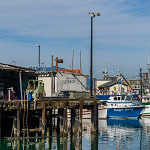





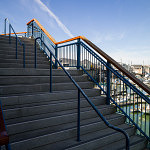

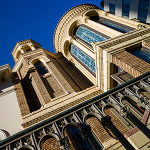
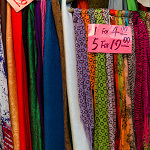





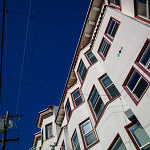




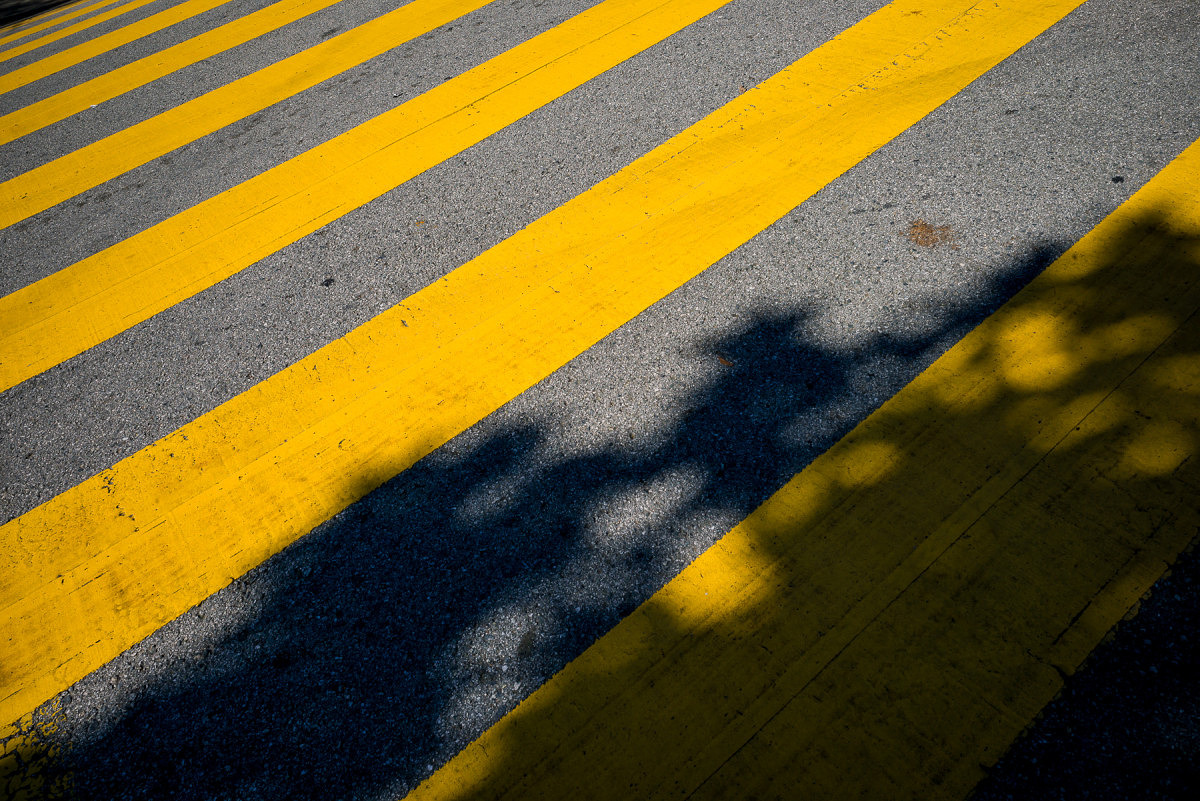

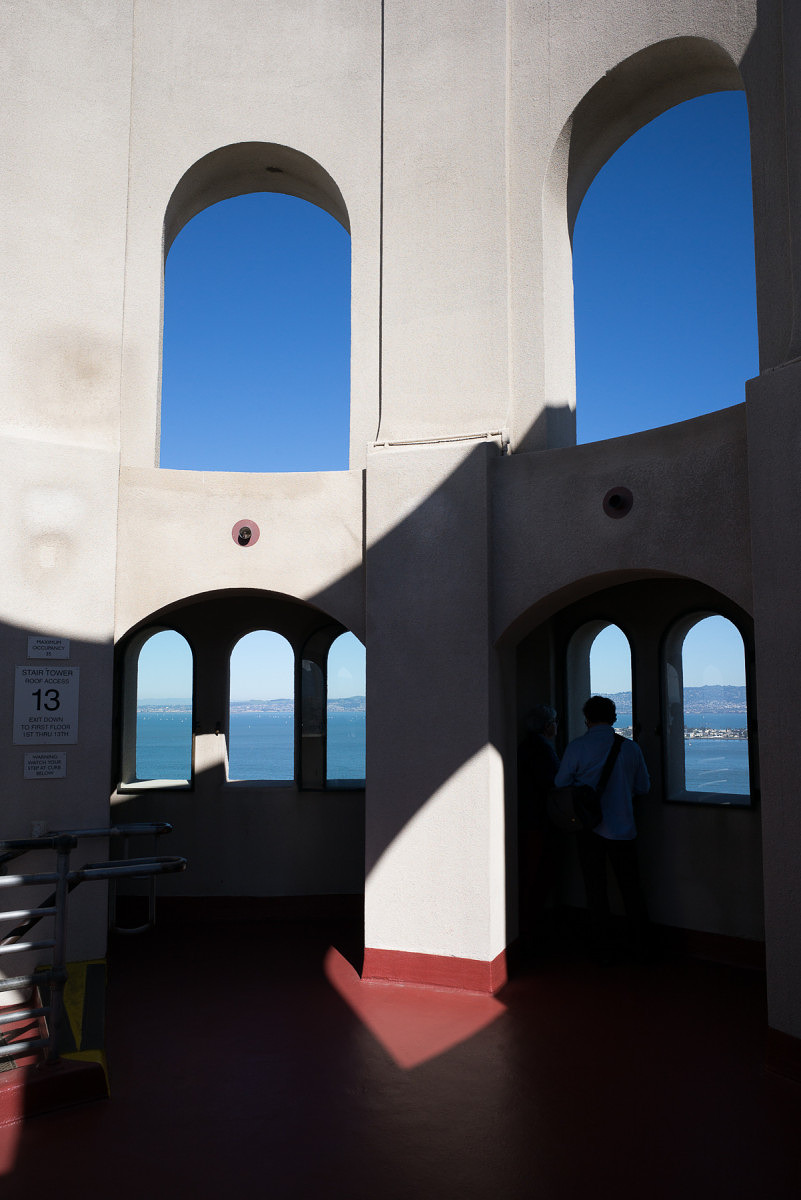


Thanks for a wonderful and very well balanced article.
I believe you have singlehandedly slayed the ccd v. cmos dragon!
Kwesi
Better than “Well done!” Superbly done!!!!!!!!!!!!!
this is BY FAR the best coverage of this subject i have yet to read. i am a longtime leica film shooter, have shot the M9 since it came out, and have just sent it to leica to have the sensor replaced (finally degraded so much that it was taking far too much touchup time to get rid of the little ‘bowties’ all over the image)… i have loved the M9 look, and when the 240 first appeared, like so many others, my immediate reaction to the image was less than thrilled – as compared with the M9 ccd. i surmised it was mostly a micro contrast, shadow curve and warmth difference, but still didn’t want to move on to the 240, despite my desire for a faster, quieter camera. i have now purchased a 240 (m-p) while the M9 is refurbished. i am SO heartened by this article and i now look forward to hanging out with my new 240. i’d love to have your ‘preset’ for achieving the M9 look in lightroom… but truthfully… i’ll just make my own way now that you’ve lit the aisles! thanks!!
This is a very well-done study and should — but unofrtunately probably will not — quell the CCD proponents who insist that it is “better” than CMOS. Maybe different, but even the differences are small and to most human eyes, indistinguishable. That is proven by this little study. One of other the critical points David makes is that “out of camera” is pretty meaningless to discuss and that the image is a product of the system, including all of the processing done when the image is opened in a computer. That leads to his recommendation to profile to your taste, and I could not agree more.
The “out of camera” discussion led me to think about my old days with film (I started in 1959). Even with film there was no such thing as out of the camera. You could use different film developers, change dilutions, change development time, change agitation, etc. etc. And that just got you to a negative. Then you could use difference papers, filters in the enlarger, exposure time in the enlarge, developer bath for prints, etc etc. And that was for black and white too. Color just added to the variables. Everybody developed to their taste; there was no “right” or “wrong”. So too with digital. Better to spend time taking photos than debating CCD vs CMOS. Or D76 vs. Acufine (you have to be a certain age to know what that means).
Great study and article. Although I didn’t participate I’m happy to get a proof that nothing is wrong with my M(240). I upgraded my M9 due to the sensor issue and the constant CCD-myth articles made me feel bad about my decision. Although I was and still am very happy with the new M. I always do some postprocessing in Lightroom, mostly moderate, sometimes even more with SilverEfex or Color Efex. To me the final image counts and the usability of the whole photographic system.
I am assuming that this would be the same for the S 006 vs the S 007, so you don’t have to do the test all over again with two S cameras.
But since the sensor in the 007 is not merely a bigger sensor than in the 240 but has other advances you have hinted about, I will look forward to you demonstrating the 007 sensor is much better, not just that it can mimic the 006.
Thank you for this thorough comparison. While I do think too that the proof is in a large print, your reasoning why you chose your method (web sized, sRGB) is perfectly sound. I appreciate transparency, and reproducibility.
Although not a Leica shooter myself for financial reasons, I esepcially liked your explanation on how you achieved that M9-look with your M240’s files. I gave them a try in Lightroom, and did like what I saw. Definitely something worthwhile to have in ones repertoire.
Cheers!
Excellent David – Nicely done, but sadly I fear it won’t make a jot of difference to the argument in general, It’s hard to convert someone from an act of faith with an exercise in logic!
All the best
Very interesting indeed.
I agree, with my M i up the clarity, contrast and play with shadows a bit, to get the look i like.
However there is one camera that gets 100% out of the camera correct, shot using JPEG of course. Dont ask why or how come, the camera just ‘cooks’ the most perfect colours, contrast etc etc…
Amazing Camera
The Leica X1
https://www.flickr.com/photos/brian-osborne/16241590761/in/set-72157639921698765
All the best
Hi David,
I quote you :
I ended up making a preset that worked on most files, with only minor tweaking required past that. I also needed to adjust the white balance to match as both cameras were shot with AWB. Personally, I find that merely adjusting WB by eye, rather than using the eyedropper is more effective. Again, the most accurate result isn’t always the most pleasing one.
Is it possible to get the preset you made . I have to buy a M240 and sell my M9P. For business reasons. But I like the M9P files so much that I am still struggling selling the M9P. A good preset would make things so much easier. I think I am now almost 6 months doubting about selling or not. But for my business I have to move on because of all the new features the 240 offers.
Please can you help me out ?
Kind Regards,
Ernie Blarinckx
Belgium
Ernie,
Check your email.
Great article. I hope you won’t mind providing me with the same. It’s been a hit and miss for me. Although I’m not specifically after the M9 look, trying the tweaks you mentioned on your post gave my images a different look (and I must admit, I kinda like it a lot). Thanks.
No problem. I’ll email them over to you.
A fascinating and through review. I own both cameras and almost never shoot the M240.
Might you be so very kind as to provide me with a copy of your presets as well?
Thank you.
Kind regards, David
Hi David:
Appreciate for your artical
Would you mind to share me the preset also?
Many thanks
Hi David
I am evaluating whether to purchase an M240 or an M9 and a while I experiment with the machines of some of my friends.
I could also have the presets that you have created to emulate the M9 on M240 ?
Thank you
Antonio
perettaantonio@gmail.com
I really love these acticles about debate between CCD and Cmos. Very helpful.
I prefer CCD actually, but what you have done indeed fresh my impression with M240.
Since I sold my M9 and got a M-P, I really miss my M9.
Could you also kindly share the preset?
Thanks a lot!
Hi Ernie:
Would you mind to share me with the preset if you got it?
Many thanks
Hi David,
I enjoyed your review. Thanks for the effort! As Ernie I would like to ask you if you could share your LR profile?
Thanks and best regards,
Raimund
I never really could care less what technology a sensor was using. I used a Leica M Monochrom and Nikon Df as my primary cameras, and recently sold the Df and Nikon glass to go all Leica (I also use Leica X Vario and X 113 for non-photography travel). With the Nikon gone, the choice was between a Leica M240 and M-E for color use alongside the M Monochrom.
CCD or CMOS wasn’t even a factor. I went with the M-E in large part because I wanted a new camera instead of a used one and it was much more affordable, but also in part because it uses the same batteries and has the same menus as my M Monochrom, making it easier to switch between them. I recognize that the M240 has capabilities that the M-E does not, but other than higher ISO and dynamic range I really am not interested in any of those capabilities.
David
I too would like some help and would really value the presets you used. I’ve had my 240 for about a year now and its taken me ages to get to grips with so many differences especially focus, I had Nikon SLR before, so was really used to point and shoot. I had real worries for a while, but I’ve even got used to walking backwards and forwards!
Lightroom has been another trial and revealation, my poor wife’s become a Lightroom widow.
Kind regards
Simon
Simon,
No worries. I’ll email you the presets to play around with.
Please email me the preset as well.
Thank you!
Thank you so much for such a well reasoned and thoughtful approach to this debate. As an M9 shooter my comparisons to this point have been along the lines of Leica vs. Nikon, this being no contest at all. But I now have added the M240 to my Leica kit and would love to have your presets if you are still willing to share.
All this hard work to mimic the M9 and some still state CCD isn’t a great unique sensor:-)
very well done review, outstanding job indeed.
To me, the following quote says it all:
“I learned quite a lot about both the M9 and M240 during this test. I was pleasantly surprised to rediscover the M9. The camera can indeed produce some really stunning images under the right conditions. To its credit and, in line with what CCD supporters say, the color palette produced by default in Lightroom (after my preset application) is extremely pleasing in most cases. Images have a bite and saturation that is very attractive. Deep blues, thick midtones and punchy highlights add to the M9’s inherent per-pixel sharpness. In daylight shooting with good, directional light and a scene with saturated colors, the M9 is truly hard to beat. Even though the camera is going on six years old, it still produces images that keep pace with the best. Its weakness, due to its CCD sensor, is low light performance. If your shooting needs don’t dictate the need for ISO 3200 and you’ve got some fast M glass to boot, well, by all means, the M9 can still work its magic for you.”
For an PP expert, anything can be done in PP, for non experts, this is missing impossible, many photographers I know barely touch their pictures, to those, a CCD vs CMOS makes a very big difference. Personally, there’s a lot of difference between opening a dull photo and making it outstanding or opening an already outstanding photo and sit back a say wow. This “WoW effect” is being given to me by an M9 10 times more than by an M240 or Canon 5DMK-III.
Just my opinion
I get where you’re going with this, but who says you can’t get wow JPG files straight out of camera with the M240. Just because it takes LR sliding to get the M240 to look like the M9, doesn’t mean the M240 isn’t a good camera. Who says I want my M240 to look like an M9 anyway 😀
The point isn’t to say that there is anything wrong with the look of the M240 files. I like M240 files. I was attempting to demonstrate that perhaps the “CCD look” that some users love can be replicated in post processing from a CMOS sensor. In my mind, one is not necessarily better than the other. If you like the default rendering of the M240, use that. If you grew accustomed to M9 images, the same look can be achieved in Lightroom.
After many years I will add a couple of words. I have m9 and m11. Indeed, in PP it is possible to make photographs very similar between different sensors. But you can always tell the difference. Just like fuji 100s and hassel x2d have one sensor, but you will never make two photos from these cameras exactly the same colors. Also m9 and even m11 (which is very close to m9 in color) – I always recognize on a large size after the PP shot from m9.
David,
Excellent piece of work. You tackled an emotional subject with thoughtfulness and impartiality. I have had both cameras, and moved to the 240 for its greatly expanded shooting envelope.
Your last points on there being no such thing as “out of the camera” are also very true and is something that is often overlooked. By the way, would you please send me the presets? I would like to try them out as a possible point of departure.
I appreciate the spirit of your work and writing..thanks again.
George
Those M240 presets for Lightroom, pretty please…? 🙂
Do M8 and M9 share the same “look”?
The M8 and the M9 have similar looks, but not the same. Some find that the M8 actually has slightly more per-pixel acuity, but the M9 also offered 80% more pixels so overall detail is superior with the M9. The M9 also has better noise performance and slightly more dynamic range than the M8.
Wonderful comparison! May I please request for the presets to be sent to me too? Many thanks in advance!
lol. i didn’t see that so many were asking for the presets when i made my first comment. very funny we’re all of the same mind. thanks again.
Hi David,
Thanks very much for the comparison, whereas I personally didn’t get on with the M240 and subsequently sold it, I have to agree with you on the points you stated in your article. The M240 and M9 files are just different, and provide little to no substantiation regarding whether CCD is technically better than CMOS or vice versa apart from high ISO performance.
I have kept my M9 and still enjoy using it, but I have also acquired a Leica Q so that I can be lazy and rely on autofocus for when the situation is a bit more spontaneous. I am just wondering whether you can share with me your lightroom preset so I can test it on the Q files?
Thanks very much.
Coppel
Hey David,
Thanks for sharing the results from this experiment. After visiting Leica Store Miami frequently for a few years now, I’ve had my eye set on an M240 but couldn’t convince myself to pull the trigger. Today I passed by the store on my way home and put my name on the waiting list for the Q. I’m extremely eager to receive it! Luis showed me your prints in the store and I was amazed with the results. Would you mind sharing the M240 preset? Luis said that the Q photos were processed with the same preset.
Thanks in advance and I appreciate all of your detailed reviews!
David,
Excellent article.
If possible could I also get a copy of your LR presets?
I am debating on selling my M9 and picking up a used M240. Prices on M240 seem to be dropping pretty quickly I assume because of the new Q and the rumors of a new M coming out.
Thanks again for all you do for the Leica community
Thanks for your article David. I was struggling selling my M9P to M-P. After reading this in-depth analysis, I understood it is really the time to go out shooting, instead of debating the ccd vs cmos in front of the screen.
Anyway, may I have your LR presets? I am interested to get some ideas from your preset setting as reference.
Many thanks 🙂
06/05 /2015
Hello David , Really appreciate the article. Very much a no non-sense approach. I will be keeping my m9 but would love to have the pre set to see if they will assist with my other Leica tools. Thanks
My personal experience with the CCD versus CMOS “look:”
Expose both sensors with a given scene to save detail for a bright sky, especially with the sun in the frame. Go for minimal blown highlights, maximum cloud detail and sky color with both. Low ISO.
In post, mask for the terrain only, then push exposure for the “terra” section of either image.
The CCD image will have a neat and different response to this processing than will the CMOS image. It’s part of the “CCD look” that I’m not sure was addressed here.
Perhaps the resulting CMOS image can be made to look like the CCD image with further post, But I haven’t been able to …
Giid work David. I have a Monochrom and looking into adding a M-P 240 for color images. Please send me your presets for both M9 and MM. They will be a great help to me. Thanks. Tuan
Hello David,
thanks for this field test. I am one of those who switched from the M9 to the M (240) and (still) love the output I got from the M9. However, I also enjoy greatly the small improvements that come with the M (240) and in the end don´t regret the update. I am still struggling to achieve the M9 look with the M files and would greatly appreciate if you could share your Lightroom preset.
Many thanks in advance and kind regards,
Raimund
Hello David,
Thank you for putting an end to the CCD vs CMOS debate. Could I get a copy of the LR presets? I am a M240 user who has never shot the M9 before and would like to see what all the fuss over the M9 color/tonality. Much appreciated.
Great Article! How can I try out your presets?
Thanks!
David,
Great Article! I was straggling to buy M9 or M240. After reading your article, it made me clean to go for M240. I am now a M240 owner. Thank you for sharing your insight. I just start to learn Lightroom. Like many others here, I would like to have your presets so that I can see how you tweak all those parameters to achieve M9 look and feel?
Many thanks & regards,
Kenneth
Hi David,
Similar request, regarding LR settings. I’m a M8 and Aperture user, I borrowed a M240 but did not enjoy the colour signature mainly (well solely I did not like the skin tones), compared to the M8.
I will down load a trial light room and use the original raws, or perhaps borrow the camera again. As I’m not familiar with the camera or Lightroom it would be such a boost.
On a final note, great article, very nice rhythm to your writing.
Warm regards
Adam
David,
Thanks for the article!
I upgraded to the M-P a couple of months ago and still have difficulties getting used to the ‘flatness’ of the files.
Not being an expert in Lightroom doesn’t help either…
You can hear me coming … Is there a way to downlaod the preset you mention in the article?
Thanks,
Peter
Just reading this great article – many thanks. So, like others asked, it there a download for the preset? And by the way, after seeing so much debate on this it is lovely to just see someone check it out.
Great Article, I have been holding off on a M240 due to what I see as differences. Your presentation here shows that can be mitigated if not eliminated. Is there a place that I can download your presets? Greatly appreciated.
Hi David
I shoot an M9-P and very much in love with the film-like character of images it produces, but have been thinking of upgrading due to the need of higher iso and speed for work. Reading your CMOS vs. CCD review, gave me the confidence to finally sell my M9 & Fuji XT-1 to buy an M240 .
To be honest, I am quite regretful of this decision. I think the character of images by the M240 is different and I am still having a hard time learning to love it, especially outdoors. Most particularly disappointing is the off-WB that produces over-warm colours in bright daylight, for a $7,000 Leica camera I feel that this shouldn’t be an issue at all, it’s such a hassle trying to colour correct it again in Lightroom. WB is terrible compared to M9 or even Fuji XT-1 which is a only quarter of the M240 price.
However, with the M240 I have to say it’s a joy to be able to shoot indoors and when the colours are right, the images it produces can be stunning in its own way. I would appreciate it if you can advise me any lightroom presets that might help with the M240’s WB issue. I will go and buy a white balance card and see how that will help, but in the mean time I will keep shooting and try to fall in love with this camera. If I can’t, maybe I will have to cut my losses and trade in the M240 to get my beloved M9-P back.
Another round of thanks for your in-depth article and another request for the presets you have!
I struggle to make M240 files look like M9 files and, irrespective of the capabilities of either camera, it is the M9 ‘look’ that I find captivating. The number of comments above along the same lines suggest this is a very common theme.
There is just something about the way the M9 handles shadows and the tendency towards a cooler WB there that has always wowed me and I miss greatly so far with the M240.
The M9 really felt like a digital incarnation of a film camera, the M240 doesn’t give me this feeling. Hugely subjective I know and expertly dissected in your article. If you are able to share your presets it would be greatly appreciated, thank you.
Dear David,
I am thankful of the great review. I think your review single handedly calm down the debate and people had slowly put the matter under the rug.
I am a beginner at LR, and being not to sensitive at certain color really making me doubt some of the adjustments I made. I would be grateful if you can send me an email containing the LR preset that you did to make certain files from M240 looking like M9. I want to test myself whether I can tell the different myself or not.
Cheers for a great website!
Thank you very much for your effort.
I really enjoyed the articel and the “quiz” 🙂
I think lot of the “leica look” comes from the leica glass… even on my fuji my leica glass produces the special signature.
My theory: Leica glass has a low element count compared to modern , overcorrected dslr glass.
I will check my theory by buying some vintage low element count glass for my nikon ….
I also did not like the look of my D800. They look “flat” without “heavy” processing.
My M9 and fuji files look almost perfect after import into lightroom.
Greetings
Alex
Great article. I have sold my m9p recently upgraded to M240 for the ISO, and as most of the users I’m struggle in M240 color rendering. I would appreciate if you could share me your present.
Many thanks and for the efforts.
CMOS has come a long way in improvements, especially in Low light environments. All the HD Sony cameras we use, are CMOS now because they out perform CCD during strobe and light blooming from stage lighting. Going from crazy LED and Laser lighting to balanced Spots really tests the performance of the camera. Here is the example I use in the film classes https://youtu.be/kYFsFcIuBis
Great article and thanks for clarifying the difference in color output between M9 and M240 sensors. Would you kindly allow me to try out the presets you mentioned for LR as well? Thanks!
Hi David
I have re-read this article several times as I’m considering trading in my M240P for a M9 as i’m not totally satisfied with the files I’m getting from my M. After reading this article I believe it must be down to my Lightroom skills. I’m a novice when it comes to Lightroom; for this reason I have found myself shooting more film.
Would you also be so kind to email the presets for Lightroom so that I can experiment before I go and make an expensive mistake.
Great web site with very in depth articles.
Thank you.
Hi Sir,
Wondering if you could share your preset. Truly appreciate it.
Regards.
To my mind M9 or M240 produce a colour signature, for most subjects it matters little as they are interpretations of the image. Where it’s not so much of a interpretation is when our brains know or want the true colours. For me the only failing of th4e M240 is Caucasian Skin tones, they are too warm, orange some say. As my family form a major part of my photography, the M240 causes me a problem. In the sample pictures they are very few Caucasian portraits, only two portraits, both were correctly guesses. For landscapes I can accept the wider dynamic range. I’d love a mini comparison of only Caucasian portraits. It’s a diverse world and Leica sell a lot of cameras to a global market, it might make sense to tune the colour array the way they do. But still it would be nice to know what the best option is for Caucasian subjects, mu guess is its easier to add warmth then to take it away.
Great Articel!!
I like M9 color but my eye is not good any more.
So I bought M240 and using external view finder+peeking.
I would like have your Lightroom Preset.
I lately bought Lica SL.
This one has totally different color and I kind not like it.
Do you have Preset for SL also?
Dear David,
Thank you very much for your great review. It’s very timely since I am in the process of upgrading my M9 to the M-P.
I am wondering If I can request your “preset” that you did to make certain files from M240 looking like M9. Thank you so much again.
Ellis
Great Job. Thank you very much David. Can you send the preset? I tried to follow your flow but not very confident that I am doing it right.
Thank you so much.
Jimmy
Thanks for a wonderful comparison between CCD and CMOS, which is very useful even for a non Leica shooter. I have noted similar differences between two generations of Canon 12 MP high-end compacts, comparing shots taken with the same ISO and manual exposure settings of the same outdoor scenes. The CMOS images have greater dynamic range, do not blow highlights nearly as much as the CCD images, but they look flatter and need adapted settings in PP or even in camera (custom colour settings) to get a similar punchy look, while still retaining more highlight detail. Thanks to this report I now know this is due to inherent differences between the two technologies. I can also note that the CMOS camera does a lot better in low light and is allover a lot faster in every way (8 times faster in burst mode!). As it is possible with fairly minimal effort in PP to obtain the look one wants, the greater dynamic range and speed seem to be making the choice between CCD or CMOS in most cases a no-brainer. Of course the manufacturers have mostly made that choice for us by now…
I am however definitely not retiring the CCD equipped camera as it enables me to take good pictures that look snappy without much post-processing, and it has features that are difficult to find in more recent models.
Hi
Thanks for the great test. That said. there were no comparison shots with skin tones. Of the few people subjects you had, they were taken with the M 240.
CMOS sensors have it on CCD sensors in high ISO performance. No argument. Low ISO performance, CCD’s, in my view are better. The CMOS sensor is better for the amateurs who want a good shot most times without a second thought I see it as the CMOS is closer to print negative film and the CCD closer to transparencies.
Thank you for your effort but I remain, unconvinced.
Wonderful review of CCD vs Cmos comparison. I’m almost temted to use my m240 as i’ve been shooting m9 all along. Inspiring post processing work, well done! This article shows how it could be done with today’s revolutionary digital darkroom that’s available to us to create any “look” we want. I’ve try to emulate the m240 files to look like from ccd and couldnt find a solution to retire my troublesome ccd sensor for a while now. Your article is a true revelation to me. I am wondering If I can ask for your “presets” for M9 and m240 if possible. Thank you so much again!
Great series of articles, thank you for the effort put into this eternal debate.
I agree with you and most others that both cameras are different animals with different strengths and weaknesses, you win some you lose some.
The colors on DNG files from the M9 though, I find much nicer and almost slide-like. Maybe that’s the “CCD look” that differentiates itself from the M240 (and other digital cameras with CMOS sensors). Then again, the M240 files are highly meallable when compared to the M9, therefore some work is needed to tweak the colors to emulate the M9’s look.
I’ve tried quite a few methods, but have not been entirely satisfied so far. I would be grateful if you could send me your LR preset to try out.
Thanks in advance!
You mention you made WB corrections and the sort.. but would it not be quicker to try make a lightroom color profile for m240, to match the color profile of m9 ? I think DXO optics pro has a camera simulation effect (where there’s drop list of camera which effect you want to apply) which could also prove to be useful
Perhaps, but not everyone is adept at creating camera profiles. My goal was to see how close I could get the files using standard, everyday methods – ones which any Lightroom user could reasonably perform.
I would love the presets also!
I just read this article and have been struggling with moving up to the 240 from my m9p. What a terrific job you did! Would you be so kind as to send the presets you used for m240. Regards, Jack
Great articles. Thanks.
I would love to get the presets.
Amazing Article and probably the most rational one!
I just discovered this website and I love it already.
Great pictures, great text.
Thks for this very good job.
Is it possible to get the preset as well?
Many thanks
Hi! i really enjoy the whole test – excellent work. I am a big m9 fan but this post make me think about used M240. Would you mind to share the preset for mimic M9 with m240 files? Many thanks!
Many thanks
Michal
I would love to get the presets.
Thank you so much.
I stumbled upon this article whilst reading your Leica M10 review. By far the most reasoned i’ve come across on the subject.
I wonder if you do see this, and if you would be kind enough to mail me the preset as well. Thanks
Thanks for the feedback. Presets on the way!
David, great! Will be using them right away!
Hi David,
I am reading your article in 2018. A masterpiece. It answered all the question I had regarding the topic.
I was wondering if you can share your presets to convert M240 look to M9.
Thanks for the great article.
Hi David,
thank you so much for such a unique article. Makes me think about upgrading.. Would you be so kind and share your magical preset with me too?
Marek
I was about to buy an M9, but this has swayed me towards an M10. I, too, would love to have these wonderful presets to seal the deal if you don’t mind!
No in 2020, I wonder how it would be compared to the M10, Which I think I’ve read somewhere that was designed with the M9 look in mind.
Hi David, I recently stumbled on your article and about to switch my ME 220 to an M10, I tried M10 and I was worried about its colour rendition on skin tones under challenging artificial light. I am new to the Leica M and I’ve read about how the M10 is closest look to the M9, but I still felt that it still looks different to my eyes. Do you think this is true? And do you have an opinion on this? Also love to have your Lightroom preset making the M240 looking like M9 colour. I know I am about 5 years too late, but I am really nervous about switching to M10. Colour rendition is more important to me than low light capability etc. Many many thanks beforehand hopefully You read this message.
Rio –
Of course, every camera looks a bit different. But, really, the M10 has some of the best color of all the digital M cameras. For presets, including the emulation preset, you can head over to my Lightroom Presets for Leica Cameras article. I’ve provided download links and usage instructions.
Late to the party. Most of the ones I got right were when I chose how well the camera portrayed a “3d” image. The M240 flattens the perspective of the image, the feeling of space from front to back on the m9 feels more real and for lack of a better word relaxed. When the M9 shows me an image and it feels like the next object is about 10 feet away the M240 makes it feel like 2 or 3 feet away, and I can’t “look into” the picture as much as a m9, but considering how many I got wrong especially when I went by color, it’s a lot closer than I initially thought. Thanks for removing a bit of bias that I had built into myself.
I cannot speak for Leica,
But I started photography with Fuji super ccd digital cameras back in the 2000s.
Since then I ‘upgraded’ to many newer cmos cameras, all of whom gave inferior colour (at least to my eyes), straight out of the camera.
It may well be a subjective thing, but I noticed it long before I came across the ccd vs cmos debate.
Unfortunately these older ccd cameras are backward in pretty much all other ways to the newer cmos cameras, which is why I feel forced to use the latter.
I also like to shoot decent quality video along with stills, and that pretty much rules out the film cameras and older ccd digital ones (some of these do offer video recording, but are very primitive by todays standards for that job).
Real shame Fuji for whatever reason was not able to stick with it’s ccd sensors and keep developing them.
David, I am fascinated by this discussion and your rigorous testing. I’m a fan of the CCD but have adapted to the CMOS sensor and now the M11. Can you please share your M9 preset? thank you.